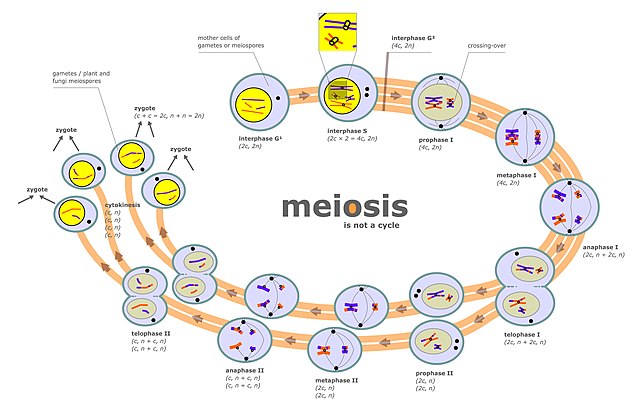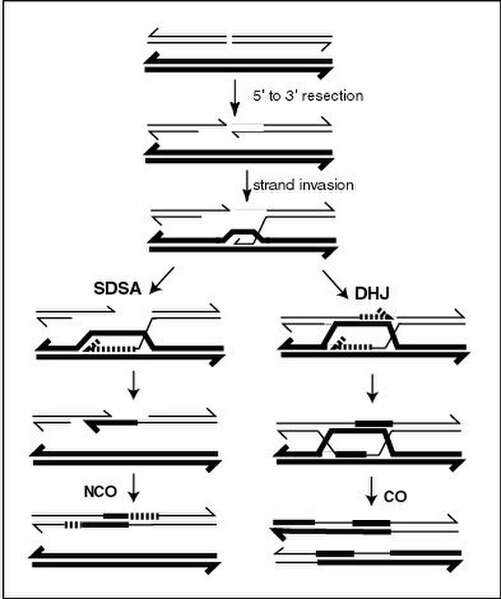Non-random segregation of chromosomes
Non-random segregation of chromosomes is a deviation from the usual distribution of chromosomes during meiosis, that is, during segregation of the genome among gametes. While usually according to the 2nd Mendelian rule homologous chromosomes are randomly distributed among daughter nuclei, there are various modes deviating from this in numerous organisms that are "normal" in the relevant taxa. They may involve single chromosome pairs (bivalents) or single chromosomes without mating partners (univalents), or even whole sets of chromosomes, in that these are separated according to their parental origin and, as a rule, only those of maternal origin are passed on to the offspring. It also happens that non-homologous chromosomes segregate in a coordinated manner. As a result, this is a form of Non-Mendelian inheritance.
Theodor Boveri 1908
Thomas Hunt Morgan
Parthenogenetic birth of an aphid
The eponymous tube with which the caterpillar of the tubular bagbearer surrounds itself
Chromosome segregation is the process in eukaryotes by which two sister chromatids formed as a consequence of DNA replication, or paired homologous chromosomes, separate from each other and migrate to opposite poles of the nucleus. This segregation process occurs during both mitosis and meiosis. Chromosome segregation also occurs in prokaryotes. However, in contrast to eukaryotic chromosome segregation, replication and segregation are not temporally separated. Instead segregation occurs progressively following replication.
A diagram of the meiotic phases
A current model of meiotic recombination, initiated by a double-strand break or gap, followed by pairing with an homologous chromosome and strand invasion to initiate the recombinational repair process. Repair of the gap can lead to crossover (CO) or non-crossover (NCO) of the flanking regions. CO recombination is thought to occur by the Double Holliday Junction (DHJ) model, illustrated on the right, above. NCO recombinants are thought to occur primarily by the Synthesis Dependent Strand Annealing (SDSA) model, illustrated on the left, above. Most recombination events appear to be the SDSA type.






